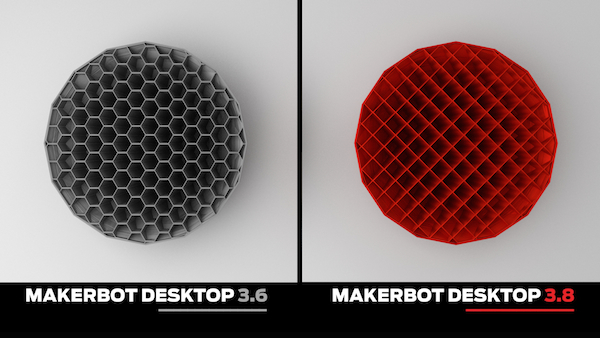
MakerBot released an update to their slicing software, MakerBot Desktop, which they say can significantly speed up 3D printing.
Version 3.8 of their desktop slicing software with a couple of very useful new features:
Now you can 3D print at least 30% faster and with stronger structural support. We’ve also improved our slicer algorithm so your prints will finish when you expect them to finish.
While we’re excited to see the print time estimation become more accurate (as it is notoriously inaccurate from many slicing programs), we’re more interested in the print speedup.
How can software alone speed up the print operation? Are they simply increasing the millimeters per second? Nope, they have optimized the infill operations by adding a new infill pattern that is more efficient.
It’s more efficient because it’s a “diamond” pattern. Previously, their default infill pattern was a hex layout, which required the extruder to slightly slow down as it wiggled its way through the infill on each layer. The diamond pattern is basically straight lines placed at angles, so the extruder can move at full speed. And this infill pattern is just as strong, if not stronger, than the hex pattern.
They say this can speed up your prints by up to 30%. That’s quite a bit – a 16 hour print, for example, might take only 11 hours.
But wait, is this really true? We believe the speedup is applicable only in certain circumstances, and those are that you require a substantial amount of infill for your 3D print. For example, if you were printing a completely hollow vase with no infill, there likely is no speed improvement. Correspondingly, as you increase the amount of infill in a job, you may see decreasing print times.
So it’s entirely possible you may see no speed improvement with this upgrade. On the other hand, there will be times that you do, making this a worthwhile upgrade.
Meanwhile, if you’ve been using alternative slicing software, you may have already discovered a configuration that yields similar effects.
Via MakerBot

